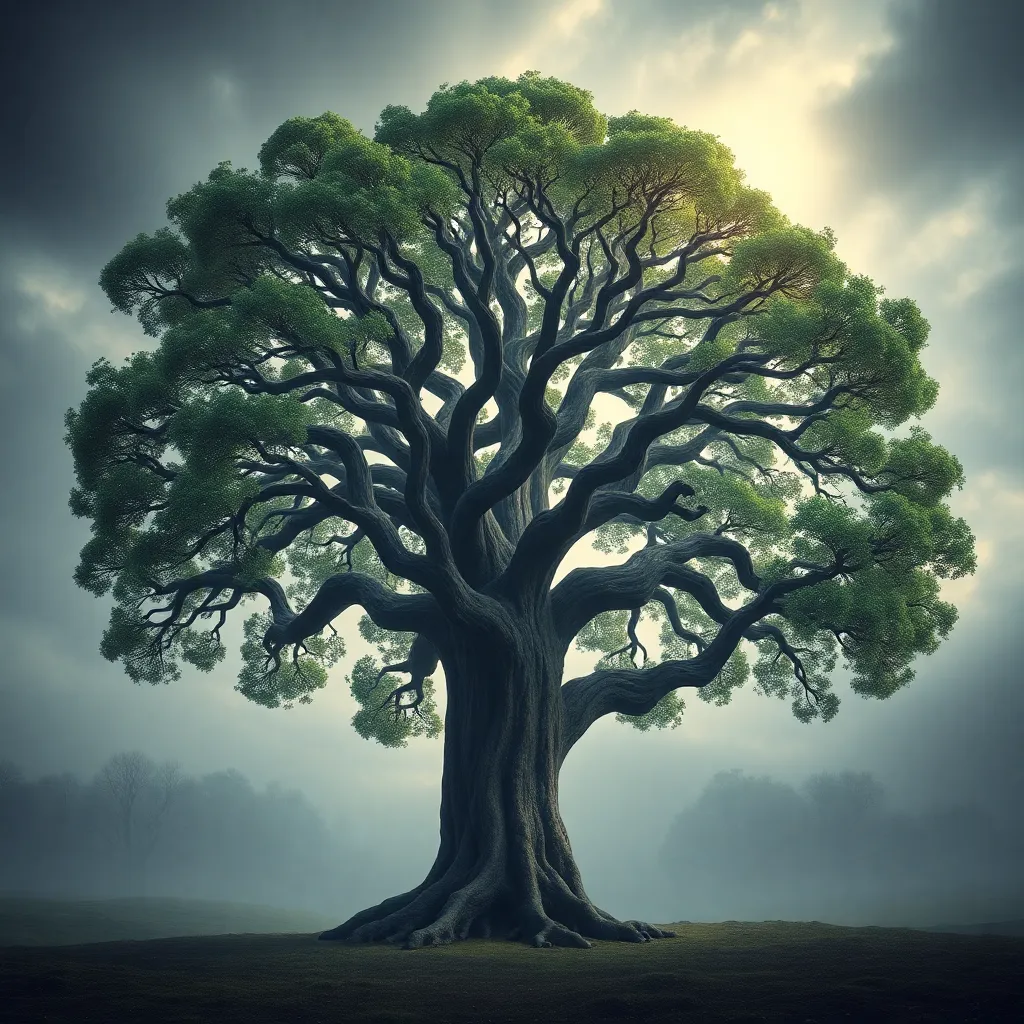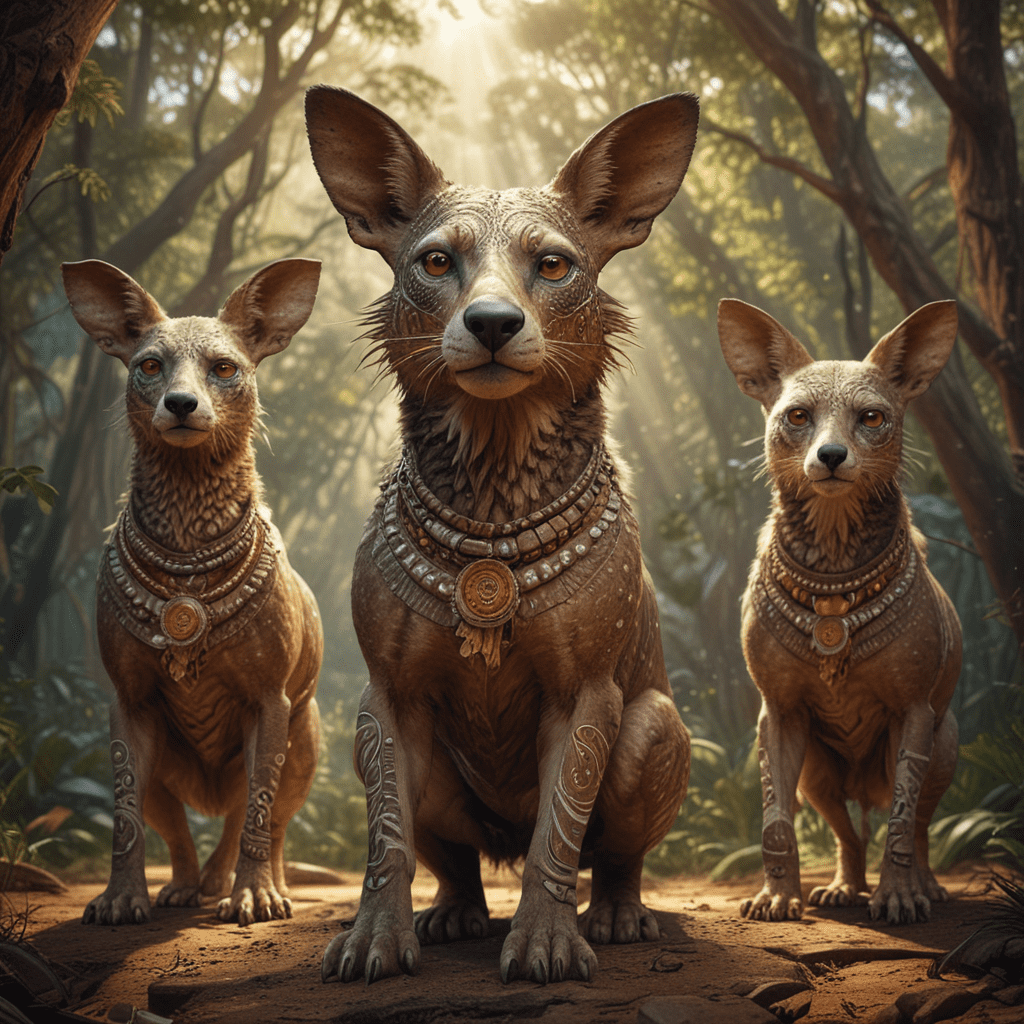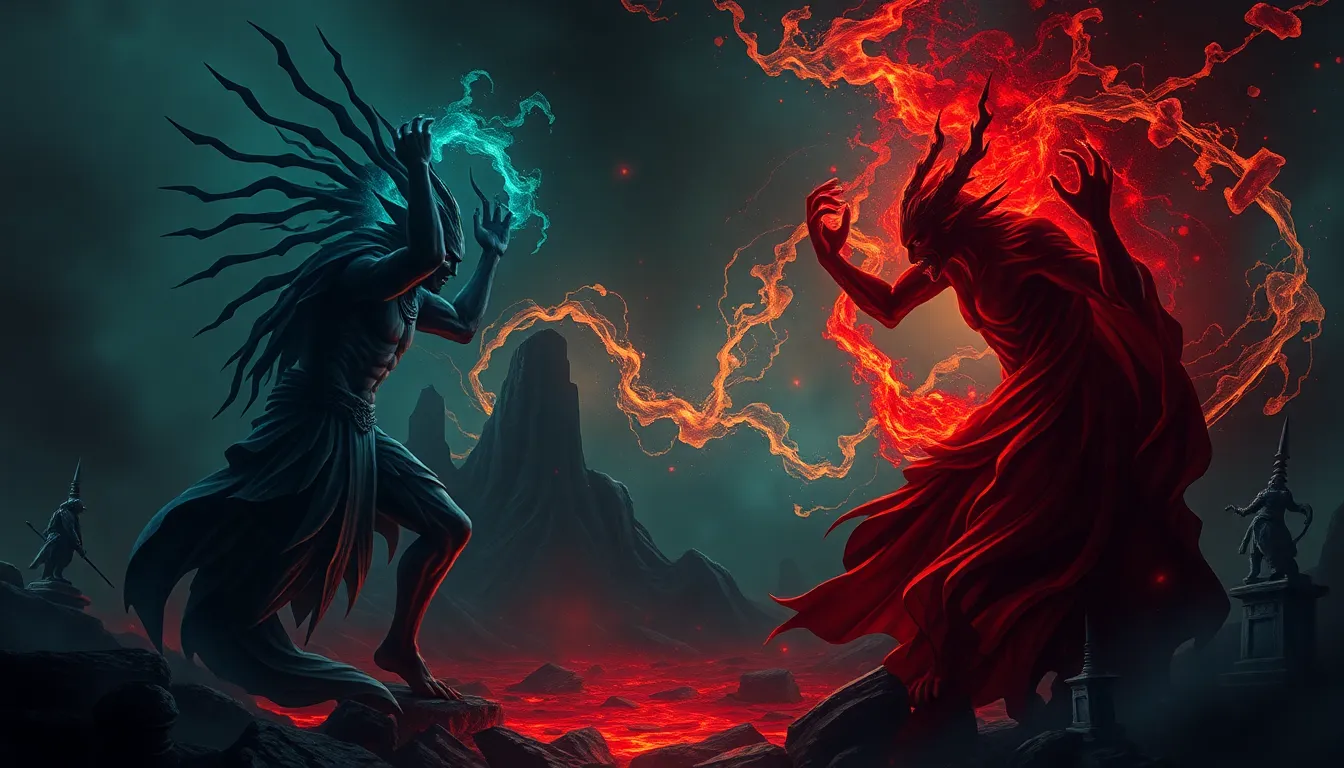Yggdrasil’s Echoes in Celtic Lore: The World Tree and the Oak of the Druids
Introduction: The Interconnection of Mythologies
Mythologies across the world often feature significant natural elements that embody deeper meanings and cultural values. Among these elements, trees have held a profound symbolic presence. In Norse mythology, Yggdrasil, the World Tree, serves as a central axis connecting various realms, while in Celtic tradition, the Oak of the Druids stands as a symbol of wisdom and strength. This article explores the parallels between these two iconic trees, delving into their significance, symbolism, and the cultural practices that surround them.
Yggdrasil: The World Tree of Norse Mythology
Yggdrasil, often depicted as a gigantic, sacred ash tree, is a central figure in Norse cosmology. Its vast branches reach into the heavens, while its roots extend into various realms, including Asgard (the home of the gods), Midgard (the realm of humans), and Hel (the land of the dead). Yggdrasil is not merely a tree; it is a living symbol of the universe itself, representing the interconnectedness of all life.
- Asgard: The realm of the gods, where powerful beings like Odin and Thor reside.
- Midgard: The world of humanity, connected to the divine through Yggdrasil.
- Hel: The underworld, where souls go after death.
The symbolism of Yggdrasil extends to themes of life, death, and rebirth. It is said that the tree is nourished by the Well of Urd, where the Norns (fate goddesses) reside, emphasizing the cyclical nature of existence. The tree’s resilience and ability to endure storms further symbolize the endurance of life itself.
The Oak of the Druids: Sacred Tree of Celtic Tradition
In Celtic culture, the oak tree holds a revered status. It is seen as a symbol of strength, wisdom, and longevity. The Druids, who were the priestly class in ancient Celtic society, regarded the oak as sacred, often conducting their rituals and ceremonies beneath its expansive branches. The oak was not only a source of sustenance but also a symbol of protection and spiritual connection.
- Strength: The oak tree is known for its sturdy and resilient nature.
- Wisdom: The Druids believed that the oak held ancient knowledge.
- Endurance: Oaks can live for several hundred years, embodying the idea of continuity.
The oak tree’s significance is deeply woven into the fabric of Celtic mythology, representing the connection between the earth and the sky, as well as the cycles of life and death.
Comparative Symbolism: Life, Death, and Rebirth
Both Yggdrasil and the Oak of the Druids embody themes of cyclical existence and the interconnectedness of life and death. In Norse mythology, Yggdrasil’s roots and branches symbolize the flow of life, with its wellspring nourishing the tree and, by extension, all realms of existence. Similarly, the oak tree, with its acorns that give rise to new life, reflects the continuous cycle of growth and decay.
These trees serve as life-giving forces within their respective mythologies, reminding us of the importance of nature in our understanding of existence. They also highlight the role of trees as central figures in mythological narratives, acting as conduits for divine wisdom and experiences.
Cultural Practices and Rituals Surrounding the Trees
The cultural practices surrounding Yggdrasil in Norse tradition include rituals that honor the connections between the realms. The tree is often depicted in sagas and poems, illustrating its importance in the lives of gods and mortals alike. For instance, Odin sacrificed himself by hanging from Yggdrasil for nine nights to gain the knowledge of the runes, illustrating the tree’s role as a source of wisdom and enlightenment.
In contrast, Druidic practices centered around the oak tree involved various ceremonies aimed at celebrating the cycles of nature. Rituals included:
- Oak Harvesting: The cutting of mistletoe from oak trees during winter solstice celebrations.
- Druidic Ceremonies: Conducting rituals for healing, divination, and communion with nature.
- Storytelling: Sharing myths and legends under the oak, reinforcing community bonds and cultural heritage.
Both traditions reflect a profound respect for nature and its cosmic significance, illustrating how trees serve as essential elements in spiritual practices.
Mythical Creatures and Beings Associated with the Trees
Yggdrasil is inhabited by various mythical creatures that add depth to its symbolism. Among them are:
- Norns: The three fate goddesses who weave the destinies of gods and men.
- Dragons: Such as Nidhogg, who gnaws at its roots, symbolizing chaos and destruction.
- Squirrels: Like Ratatoskr, who carries messages between the different realms.
In Celtic lore, the oak tree is also surrounded by mythical beings, including:
- Dryads: Tree spirits that protect and embody the life of the oak.
- Fae: Enigmatic beings that are often associated with nature, bringing both blessings and mischief.
These creatures play significant roles in the narratives surrounding Yggdrasil and the oak, symbolizing the interconnectedness of life, nature, and the mystical forces at play.
Modern Interpretations and Cultural Revivals
In contemporary times, there has been a resurgence of interest in Norse and Celtic mythology. The themes embodied by Yggdrasil and the Oak of the Druids continue to influence spiritual practices, art, and literature. Many modern spiritual movements draw inspiration from these ancient symbols, emphasizing a return to nature and the cyclical understanding of life.
In popular culture, Yggdrasil and the oak tree have found their way into various forms of media, including:
- Literature: Novels and poetry that explore themes of mythology and nature.
- Art: Visual representations of these trees, often highlighting their mystical qualities.
- Spiritual Practices: Contemporary paganism and nature-based spiritualities that honor these trees as sacred.
This revival reflects a broader cultural shift towards valuing nature and the wisdom found in ancient traditions.
Conclusion: The Enduring Legacy of Yggdrasil and the Oak
In conclusion, Yggdrasil and the Oak of the Druids serve as powerful symbols within their respective mythologies, embodying universal themes of life, death, and rebirth. While they originate from different cultural contexts, both trees highlight the interconnectedness of existence and the importance of nature in understanding our place in the cosmos.
As we reflect on these enduring legacies, it becomes clear that the stories and symbols associated with Yggdrasil and the oak continue to resonate with us today, offering insights into the human experience and our relationship with the natural world.



